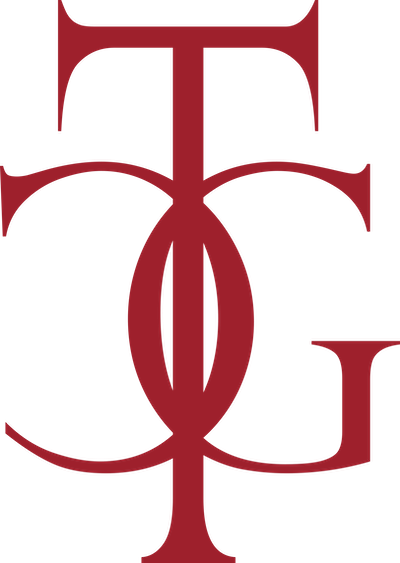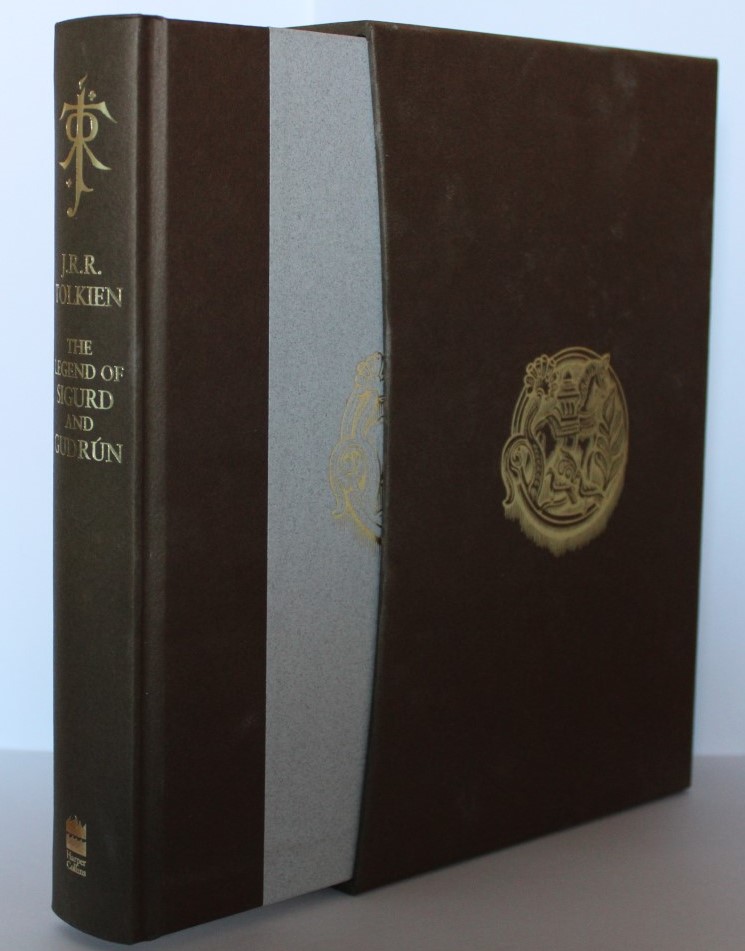Possible typos in LOTR
13 Jul, 2021
2021-7-13 7:44:41 AM UTC
2021-7-13 7:44:41 AM UTC
I noticed a few possible typos in all current editions of LOTR I checked. Since I only have access to a few editions (and many are scans, thus not so reliable as physical ones), I can only determine a rough time range of when one error crept in. Could you help to check if I made any mistakes and pin down the timeline?
In summary I think there are four origins: 1. from Tolkien himself and existed since 1954;2. the publisher misinterpreted Tolkien’s manuscript, such error also existed since 1954; 3. due to the wearing out of the printing device: type slug, photographic film or paper; 4. scanning error when the conventional typesetting was changed to computer typesetting, such error existed since Harper 1994, when computer typesetting was used on LOTR for the first time.
Pictures are not included in this post, for convenience you can check them here: https://zionius.wordpress.com/2021/06/ ... in-the-lord-of-the-rings/
Title page
The title page is written in Tengwar:
>of Westmarch by John Ronald Reuel Tolkien. Herein is set forth
>the history of-the War of-the Ring and the Return of the King as seen by the hobbits
In Tolkien's draft and the early editions before 1994, the two “by” in Tengwar are written like “mǐ”, the breve-like tehta denotes y /ai/. However, the letter turned to more like í in the 2004 edition, which would mislead readers to read them as “be”.
Another interesting thing is in 1994 edition, the whole inscription is rewritten in much thicker strokes. And 2004 edition seems to have resumed the older inscription. But during the process the tehta of “by” blurred due to a scanning error.
Ring Inscription
In all the editions I checked, the stroke in the last consonant letter “l” is always unbroken before 1994, and always broken after 1994. So this mistake probably happened in Harper 1994 due to a scanning error. According to D. Anderson, in 1999 the US editions by Houghton Mifflin adopted Harper 1994’s text. So I guess the stroke should be unbroken for any Houghton Mifflin editions before 1999.
The Doors of Durin
10 “i”s are written on Durin’s Gate, 3 in the outer arc and 7 inner. Compare Tolkien’s final draft (Art of LOTR #47) and the publisher’s redrawn versions, you’ll notice all the “i”s by Tolkien have the dot. But the 1954 version missed one dot (the first one in outer arc), and two more dots missing since at least 1985 (the first two in inner arc).
The missing dot might have influenced some linguists. In most Elvish language introductions, like An Introduction to Elvish, wikipedia and Amanye Tenceli, the “undotted i” is considered the standard form in the Mode of Beleriand of Tengwar, whereas “dotted i” is but a variant. However, as we see how Tolkien wrote it, he preferred “i” in formal writing. Another example is DTS 58, when he told a reader how to write “Imladrist”, he used “i” with the dot. Also in a detailed description of the Mode of Beleriand of Tengwar written in 1930s (Parma Eldalamberon 22, p30), Tolkien gave the dotted i as standard form. That’s not to say Tolkien didn’t use undotted i. In the earlier drafts of Durin’s Gate, he preferred undotted i. The letters are also in a more flowing manner. So maybe undotted i could be considered as a more cursive form. According to PE22 Tolkien said the dot of i in Mode of Beleriand is a mere definer “to facilitate analysis of letters”.
Previous examples are all missing parts. What if dust falls on the prototype, will an extra dot appear? Sure! Durin’s initial, the letter “D” is inscribed in Tengwar on his Gate. Since at least 1991, his initial has an extra dot, making it read as "di" instead.
Dwarf family tree
In Appendix A, the Dwarf family tree shows a straight line between Durin the Deathless and Durin VI. It should be a dashed line, hinting there are generations in between, just as the line between Thorin III and Durin VII (In HM 1994 edition, this second line is also mistakenly represented by a straight line). In Tolkien’s earliest dwarf family tree (The Peoples of Middle-earth, p. 277), he used a dashed line in both cases. So I guess this is either Tolkien’s error or the publisher misread his manuscript. This error exists since at least 1965. And was probably introduced in the 1954 1st print.
Following w
>The sign for following w (required for the expression of au, aw) was in this mode the u-curl or a modification of it ˜. -App.E
It’s known in Tolkien’s Tengwar specimen he used “∽” for following w. Why use its mirror, “~” here? According to the privately circulated Jim Allan’s Report from Marquette, in the typescript for App.E, “∽” was used here, written by hand. (See Måns Björkman Berg’s post in elfscript2 group https://tolkienlistsearch.herokuapp.co ... 5f00a8ec7d7983de1f18f507) Apparently the printers misinterpreted and used “~” instead.
In summary I think there are four origins: 1. from Tolkien himself and existed since 1954;2. the publisher misinterpreted Tolkien’s manuscript, such error also existed since 1954; 3. due to the wearing out of the printing device: type slug, photographic film or paper; 4. scanning error when the conventional typesetting was changed to computer typesetting, such error existed since Harper 1994, when computer typesetting was used on LOTR for the first time.
Pictures are not included in this post, for convenience you can check them here: https://zionius.wordpress.com/2021/06/ ... in-the-lord-of-the-rings/
Title page
The title page is written in Tengwar:
>of Westmarch by John Ronald Reuel Tolkien. Herein is set forth
>the history of-the War of-the Ring and the Return of the King as seen by the hobbits
In Tolkien's draft and the early editions before 1994, the two “by” in Tengwar are written like “mǐ”, the breve-like tehta denotes y /ai/. However, the letter turned to more like í in the 2004 edition, which would mislead readers to read them as “be”.
Another interesting thing is in 1994 edition, the whole inscription is rewritten in much thicker strokes. And 2004 edition seems to have resumed the older inscription. But during the process the tehta of “by” blurred due to a scanning error.
Ring Inscription
In all the editions I checked, the stroke in the last consonant letter “l” is always unbroken before 1994, and always broken after 1994. So this mistake probably happened in Harper 1994 due to a scanning error. According to D. Anderson, in 1999 the US editions by Houghton Mifflin adopted Harper 1994’s text. So I guess the stroke should be unbroken for any Houghton Mifflin editions before 1999.
The Doors of Durin
10 “i”s are written on Durin’s Gate, 3 in the outer arc and 7 inner. Compare Tolkien’s final draft (Art of LOTR #47) and the publisher’s redrawn versions, you’ll notice all the “i”s by Tolkien have the dot. But the 1954 version missed one dot (the first one in outer arc), and two more dots missing since at least 1985 (the first two in inner arc).
The missing dot might have influenced some linguists. In most Elvish language introductions, like An Introduction to Elvish, wikipedia and Amanye Tenceli, the “undotted i” is considered the standard form in the Mode of Beleriand of Tengwar, whereas “dotted i” is but a variant. However, as we see how Tolkien wrote it, he preferred “i” in formal writing. Another example is DTS 58, when he told a reader how to write “Imladrist”, he used “i” with the dot. Also in a detailed description of the Mode of Beleriand of Tengwar written in 1930s (Parma Eldalamberon 22, p30), Tolkien gave the dotted i as standard form. That’s not to say Tolkien didn’t use undotted i. In the earlier drafts of Durin’s Gate, he preferred undotted i. The letters are also in a more flowing manner. So maybe undotted i could be considered as a more cursive form. According to PE22 Tolkien said the dot of i in Mode of Beleriand is a mere definer “to facilitate analysis of letters”.
Previous examples are all missing parts. What if dust falls on the prototype, will an extra dot appear? Sure! Durin’s initial, the letter “D” is inscribed in Tengwar on his Gate. Since at least 1991, his initial has an extra dot, making it read as "di" instead.
Dwarf family tree
In Appendix A, the Dwarf family tree shows a straight line between Durin the Deathless and Durin VI. It should be a dashed line, hinting there are generations in between, just as the line between Thorin III and Durin VII (In HM 1994 edition, this second line is also mistakenly represented by a straight line). In Tolkien’s earliest dwarf family tree (The Peoples of Middle-earth, p. 277), he used a dashed line in both cases. So I guess this is either Tolkien’s error or the publisher misread his manuscript. This error exists since at least 1965. And was probably introduced in the 1954 1st print.
Following w
>The sign for following w (required for the expression of au, aw) was in this mode the u-curl or a modification of it ˜. -App.E
It’s known in Tolkien’s Tengwar specimen he used “∽” for following w. Why use its mirror, “~” here? According to the privately circulated Jim Allan’s Report from Marquette, in the typescript for App.E, “∽” was used here, written by hand. (See Måns Björkman Berg’s post in elfscript2 group https://tolkienlistsearch.herokuapp.co ... 5f00a8ec7d7983de1f18f507) Apparently the printers misinterpreted and used “~” instead.








 4365
4365 1.98M
1.98M